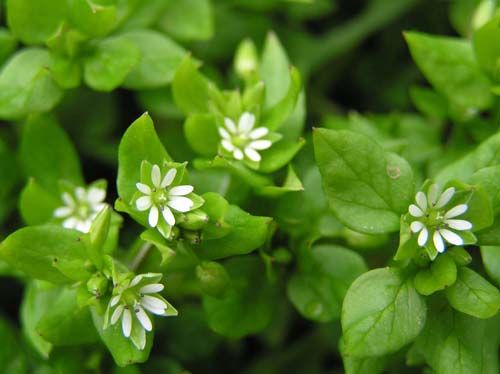Introduced species: Chickweed (Stellaria media)
Description: Chickweed is a very common garden plant, behaving as either an annual or a perennial depending on the local climate; our mild winters mean that it often lasts from one year to the next. The plant is inconspicuous, with small, opposite, oval-shaped leaves on stalks that can reach up to 40 cm (16 in), but are typically much shorter. Its flowers are likewise quite small (generally around 5 mm = 1/4″), but distinctive: its five petals are so deeply divided that it looks like ten, which is what gives it its “starry” genus name. Seed capsules follow shortly after blooming. A member of the Pink family (Caryophyllaceae), this Eurasian native is naturalized throughout much of the temperate world, and is used as both a nutritious edible and for medicinal purposes. (NOTE: always triple-check your ID before eating any plant.)
Spread: Chickweed spreads exclusively by seeds, which germinate readily in lawns, fields, and disturbed sites. Left to its own devices, it forms thick, ground-cover mats.
Control: Chickweed’s roots are quite shallow, so hand-pulling the plant before it sets seed is the best approach to controlling it. Chickens (as well as many wild birds) will readily eat the plant, so feathered friends can do the work for you if you don’t fancy a lot of time on your knees.
Native replacement: Siberian miner’s lettuce (Claytonia sibirica) has larger, showier flowers than chickweed, with pink stripes (giving rise to another common name for the plant, “candyflower”). It is also edible, and will grow well in the same places chickweed haunts. It is native throughout the Pacific northwest.


